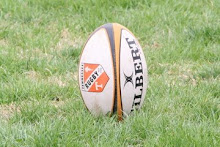Now that the fall season is in the books there is time to reflect on the effort and quality of rugby that was on display. Probably the single most difficult thing to predict from Saturday to Saturday this fall is how the referee will manage the tackle / ruck during the match… So, lets identify the ideology of the referee as it relates to ruck management.
Pretty much all teams now teach their players to arrive low at the ruck and initially use the player on the ground as some sort of support to “stay on their feet”. You will hear some coaches still complain about this being bridging but I think its pretty clear that its being allowed, particularly since we got that handy little handout at the national tournament (see prior post for details). You can pretty much define a rucking style and a referee’s management by what happens next… What do the next players in support do when they arrive and what happens to the players already there?
For the purpose of this exercise we must also be careful to define “stay on their feet”. It can mean anything from the player’s body not physically beginning on the ground to having the weight of your body on your feet (standing).
Conservative
A conservative referee approach will keep everyone on their feet at all times. So, once that player has secured the ruck, he expect the next supporting players to arrive and also stay on their feet – meaning the balance of their weight is on their feet, not balanced on a player already on the ground (like the tackled teammate). No one should be on the ground except maybe the tackled player.
Moderate
The moderate referee understands that the arriving players may actually force or drive the existing (bridging) teammate past the ball and is OK with that as long as he doesn’t willfully collapse to the ground. You typically see players end up in the push up position either lying over the tackled player or just past them.
Liberal
The liberal referee has little regard to players that ruck past the ball on clearly won rucks. So, once the bridged player is driven past the tackled teammate by support player #1, he simply goes to the ground. Then support player #2 drives #1 past the ball as well and he goes to the ground and/or collapses on top of the original bridged player. In this case, you may see players stacked on top of each other or end to end with their shoulders clearly on the ground. Now that the defending team isn't allowed to tidy up their side of the ruck with their boots, you see this method more and more.
The focus of the moderate and the liberal referee is obviously on won possession so get it moving regardless of players willfully leaving their feet. The players action make it much more difficult to counter ruck and also creates a deeper off sides line so that the attacking team gets a much better launch in the next phase. Since this method is obviously the most advantagous for attacking teams, it is obviously the preferred method of coaching the ruck. The only problem is that if you teach a rucking technique with the balance of the player’s weight off their feet and then you run across a conservative referee, you will have a penalty riddled game.
I had a very interesting conversation with a LSU parent this past weekend and they pretty much explained this very thing to me. I was complimenting the (liberal) rucking style used by LSU and he recounted their experience last year in the West semifinals against Colorado. Seems that they faced a very good Colorado team and brought their liberal rucking style. Unfortunately for them, the game was apparently managed by a conservative referee. This parent definitely wasn't happy with the penalty count and was left with a very clear opinion that it effected the outcome of the game.
Monday, November 10, 2008
Subscribe to:
Post Comments (Atom)

No comments:
Post a Comment